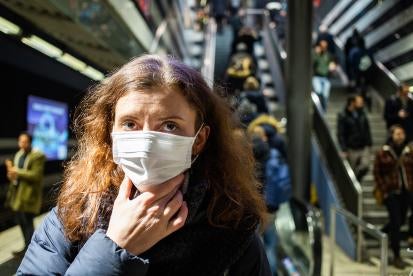On the evening of March 18, 2020, President Trump signed into law the multiple-subject Families First Coronavirus Response Act (FFCRA).
The focus of this alert is to summarize the two portions of the FFCRA which provide eligible employees limited emergency paid leave and make certain coronavirus-related leave under the FMLA paid: the Emergency Paid Sick Leave Act (EPSLA) and the Emergency Family and Medical Leave Expansion Act (EFMLEA). Employers subject to these paid sick leave provisions will be provided with federal tax credits and/or other federal tax relief to reimburse them for payments made under the Act.
On Friday, March 20, 2020, The Department of Treasury, the I.R.S., and the Department of Labor (DOL) issued a joint press release (discussed in more detail below) providing more information to employers impacted by the new legislation and promising that guidance and/or regulations interpreting the legislation will be coming in the next week or so.
The third section of this alert features a few takeaways on this important news release by the federal agencies.
EMERGENCY PAID SICK LEAVE ACT (EPSLA)
-
The EPSLA applies (1) to public employers of any size; or (2) to private-sector employers with fewer than 500 employees.
-
Note: the DOL has been given the authority to issue regulations to exempt small businesses (fewer than 50 employees) from the requirements of the expanded Act where the imposition of such requirements would jeopardize the viability of the business.
-
Note: the employer of an employee who is a healthcare provider or an emergency responder may elect to exclude such employee from the protection of this new leave. The terms “healthcare provider” and “emergency responder” are not defined in the Act, but may be addressed in the soon-to-be released guidance and/or regulations.
-
-
All employees qualify for EPSLA leave immediately upon the EPSLA’s effective date on April 2 – there is no requirement that the employee work for a minimum number of days or hours before becoming eligible. Employees must give notice of the need for leave as soon as practicable.
-
The EPSLA provides paid sick leave when an employee is unable to work (or telework) for any of the following reasons:
-
The employee is subject to a federal, state, or local quarantine or isolation order related to COVID-19;
-
The employee has been advised by a healthcare provider to self-quarantine due to concerns related to COVID-19;
-
The employee is experiencing symptoms of COVID-19 and is seeking a medical diagnosis;
-
The employee is caring for an individual who is subject to a quarantine or isolation order or the individual has been advised by a healthcare provider to self-quarantine due to concerns related to COVID-19;
-
The employee is caring for a son or daughter of such employee if the school or place of care of the son or daughter has been closed, or the childcare provider of such son or daughter is unavailable; or
-
The employee is experiencing any other conditions substantially similar to the COVID-19 virus. The government will issue later guidance, but it is assumed that this provision refers to employees who are having symptoms but cannot be tested for one reason or another.
-
-
The EPSLA entitles full-time employees to a bank of 80 hours of sick leave. Part-time employees are granted hours of sick leave in proportion to the amount of time that they normally work each pay period. Employees taking leave pursuant to the Act are compensated as follows:
-
If an employee is subject to a federal, state, or local quarantine or isolation order, or has been advised by a healthcare provider to self-quarantine due to concerns related to COVID-19, or the employee is experiencing symptoms of COVID-19 and seeking a medical diagnosis, then the employee will receive pay equal to their regular rate of pay, the federal minimum wage, or the state minimum wage (whichever is highest). In other words, for the first three categories of qualifying conditions, the pay is at 100%, however, the employee is not entitled to more than $511 per day and $5,110 in the aggregate.
-
On the other hand, if the employee needs the leave to care for an individual or to care for a child who is out of school, then the employee is entitled to no more than two-thirds of their regular rate of pay, the federal minimum wage, or the state minimum wage (whichever is highest). That same two-thirds proportion applies to the new sixth category – that is, an employee who is experiencing a substantially similar condition. Employees who are entitled to only two-thirds of their pay are not entitled to receive more than $200 per day and $2,000 in the aggregate.
-
-
The employer cannot require the employee to exhaust other available PTO before using the EPLSA leave, but the employee could make this election if they choose. Additionally, the employer cannot require the employee to, as a condition of providing paid sick leave, find a replacement employee to cover the hours during which the employee is using paid sick time.
-
The EPLSA contains an anti-retaliation provision – that is an employer cannot discriminate against an employee who chooses to exercise their rights to paid leave under this Act.
-
Employers must post notice of the Act.
-
The Act goes into effect no later than April 2, 2020 and expires (unless extended) on December 31, 2020.
-
Employers will be provided with federal tax credits and/or other federal tax relief to reimburse them for payments made under the Act.
EMERGENCY FAMILY MEDICAL LEAVE ACT (EFMLEA)
-
The EFMLEA applies (1) to public employers of any size; and (2) to private-sector employers with fewer than 500 employees.
-
Note: the DOL has been given the authority to issue regulations that will exempt small businesses (fewer than 50 employees) from the requirements of the expanded Act, where the imposition of such requirements would jeopardize the viability of the business.
-
-
The Act provides that eligible employees may take up to 12 weeks of leave to care for their children if school or a childcare facility is closed due to a “public health emergency” if they are unable to work (or telework).
-
The first ten days of leave are unpaid unless the employee elects to use PTO or the “emergency sick leave” created by the Emergency Paid Sick Leave Act (discussed in detail above).
-
The remaining ten weeks are paid at two-thirds of the employee’s regular rate of pay for the regular number of hours the employee would have worked. The payments are capped at $200 per day or $10,000 for the entire ten-week period.
-
To be eligible for leave, the employee must have been employed for at least 30 calendar days. It is unclear, however, whether the 30 days must be consecutive.
-
Note: the employer of an employee who is a healthcare provider or an emergency responder may elect to exclude such employee from the protection of this new leave. The terms “healthcare provider” and “emergency responder” are not defined in the Act, but may be addressed in the soon-to-be released guidance and/or regulations.
-
-
The EFMLEA provides that employers must protect the employee’s job and bring the employee back to the same or an equivalent position at the end of the protected leave period. There is an exception to this provision, however, for employers with fewer than 25 employees, if the employer can show (by satisfying a yet-to-be-published multi-factor test) that bringing the employee back to work will result in an economic hardship. In that event, the employee must be placed on a preferential recall list for one year.
-
The EFMLEA goes into effect no later than April 2, 2020 and expires (unless extended) on December 31, 2020.
- Employers will be provided with federal tax credits and/or other federal tax relief to reimburse them for payments made under the Act.
Here is a link to last Friday’s joint federal news release.
SOME KEY TAKEAWAYS FROM THE FEDERAL AGENCIES’ RELEASE:
-
Although the release uses language such as “immediately,” “immediate advantage,” and “streamlined process,” the release also states that employers will be able to claim tax credits “based on qualifying leave they provide between the effective date and Dec. 31, 2020.” With the effective date now being April 2, and no indications of a plan to move up that date, this language may be the answer to the question of whether “Good Samaritan” employers who provide additional benefits before April 2 can claim tax credits for those benefits. It appears not. Only benefits provided after April 2 will likely qualify for federal reimbursement.
-
The release also makes clear that the DOL understands the concerns of small employers (fewer than 50 employees). It promises to provide guidance that will “clearly articulate the standard” to get an exemption in instances where providing paid leave would jeopardize the ability of the business to continue.
-
Consistent with the expressed empathy for small employers, the DOL represents that it will issue a temporary, 30-day non-enforcement policy that will allow all employers to come into compliance with the new leave laws. Rather than bringing enforcement actions, the DOL will instead focus during the initial 30 days on “compliance assistance.”




 i
i

